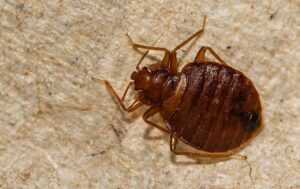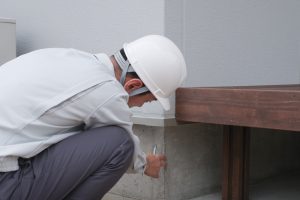Here are 7 Amazing Tips for Cleaning Sewer & Drainage Line

Sewer lines are a critical part of every home’s sink drain plumbing system. They connect from a sink, shower, or toilet to the main sewer line. A clogged sewer or drainage line can cause a lot of headaches, but with the right approach, you can keep your lines flowing smoothly.
A clogged sewer line can be frustrating, time-consuming, and expensive to fix. Fortunately, there are some simple things you can do to help keep your sewer line clear.
1. Use a Plunger
There are many ways to unclog your sewer & drainage lines, but none of them work as efficiently and quickly as a plunger. Whether you’re dealing with a sink that won’t drain or your toilet isn’t flushing, a plunger can be an invaluable tool when you need it most.
First, make sure that you’re using the correct type of plunger for the task at hand. A standard plunger, also known as a cup plunger, is best for sinks and other fixtures that have a flat surface.
Place the plunger over the drain opening to create a tight seal, and push the plunger down with firm pressure. After 20 seconds, you should feel resistance as the water forces itself down and frees up most clogs.
If you’re dealing with a slow drain, try plunging more forcefully to increase the suction. Also, cover the overflow drain to keep air from escaping while you’re plunging.
2. Try a Plumber’s Snake
A plumber’s snake drain cleaner is an invaluable tool for sewer drain cleaning. It’s a much more effective method than chemical drain cleaners, which can corrode pipes over time.
Using a plumber’s snake is easy and safe, but it’s important to follow the right safety precautions. Begin by setting up some old towels or rags around your working area to catch any waste that might come out of the pipe.
Next, remove the trap arm from your sink to give you the best access to your drain pipe. You should also make sure that the line is free of any clogs before you try to snake it. Now, feed the end of the snake (or auger) into your drain pipe, turning it as you push. As soon as you feel resistance, turn it a bit more until it latches onto what’s clogging your drain.
Once you hit the clog, rotate it back anti-clockwise to break up the solid clog material and dislodge it from your drain. Repeat this process until all of the clogged material is gone.
3. Use a Natural Drain Cleaner
Using a natural drain cleaner for sewer pipe cleaning can help you avoid many of the health and safety issues that toxic chemical drain cleaners can cause. For example, some chemical drain cleaners can be harmful when ingested or absorbed through the skin.
They can also be hazardous to your health if you breathe in the fumes and can cause burns or injuries. Toxic chemicals can also erode your pipes, potentially causing costly sink drain plumbing repairs.
A great alternative to toxic chemical drain cleaners is baking soda and vinegar. When you combine them, they form bubbles that break up grease clogs in sewer and drainage lines. You can pour the mixture down your drain and let it sit for up to 30 minutes before flushing it out with hot water. You can repeat this process multiple times to get rid of any stubborn clogs.
4. Use a Chemical Drain Cleaner
Chemical drain cleaners are liquid or spray-based solutions designed to break up clogs. They contain a variety of chemical bases that generate heat to melt grease, soap, and other thick substances, causing clogs.
Caustic drain cleaners (such as sodium hydroxide or lye) are extremely corrosive to metal and organic materials. They also release electrons that help clogs lose their shape and dissolve. However, this process can cause a number of hazards when used improperly. They can also cause serious burns to the skin and eyes, as well as loss of hair.
Oxidizing drain cleaners, on the other hand, use oxygen to pull electrons from the molecules in clogs. They can be effective at dissolving clogs that involve grease and hair, but they’re not as good at removing other kinds of buildup.
They should be used only as a last resort to clear a clog. If they don’t work, it’s probably a sign that something else is causing the clog. Try other ways to solve the problem first, such as a plunger or a plumbing snake drain cleaner, baking soda and vinegar, or hot water and soap.
5. Call a Professional Plumber
Plumbers are professionals who use tools and skills to install, repair and maintain pipes that carry liquids and gases. They also help troubleshoot and repair dysfunctional sink drain plumbing systems.
The plumbing industry has a significant impact on people’s lives, helping to eliminate wastewater safely and effectively. The job requires an understanding of the latest regulations and innovative plumbing products.
A clogged drain plumber is a career that suits those who enjoy practical, hands-on tasks and are good at listening to customers. This is because plumbers spend a lot of time in the field meeting new people, which can build relationships that pay off in the future.
Despite the fact that most homeowners do not pay much attention to their sewer pipe cleaning until they have issues, this is one area of home maintenance that you should address at least once a year.
Professional drain cleaning services remove waste and help to keep your pipes clean and flowing. It also helps to detect small plumbing problems that may not be visible until the buildup is removed.
6. Regular Maintenance
Your sewer and drainage line is a vital part of your home, as it connects each drain from your sink, shower, and toilet. But, if these lines become blocked and clogged, it can lead to a lot of problems. This can include flooding your neighborhood, sewage coming into your home, and more. This is why regular sewer drain cleaning is important.
One of the best ways to do this is by hiring drain cleaning services. They will be able to not only clear the clog but also inspect your sewer and drainage system to make sure everything is working properly. They will also be able to spot any damage that may be causing blockages and other issues.
Another way to prevent sewer line clogs is by not dumping cooking oil and grease down the drain. This is because once the oil cools, it can solidify and clog your pipe.
7. Prevention is Key
A sewer line is a duct installed inside properties to transport waste material to the central sewer disposal system. These lines decay over time and can easily become clogged or blocked.
Hence, it’s important to get these lines cleaned and inspected regularly to prevent issues like a clogged sewer line or sink. These can lead to a buildup of bacteria, which causes unpleasant odors and an unhealthy environment within your home.
This happens because the wastage, including dirty water, grease, and debris, has nowhere to exit. Eventually, it binds together and forms a thick sludge. This is because every single particle has accumulated in the clog, making it difficult for water to flow through the sludge. It also slows down water drainage in your sink, bathtub, shower, or toilet.
Conclusion
Clogged drains can cause a lot of problems, including water stains, leaks, and pipe damage. To avoid this, you need to know what you should and shouldn’t put down the drain and how to clean them properly.
In conclusion, keeping your sewer and drainage lines flowing smoothly is important for the overall health and well-being of your home. Use these tips to help keep your lines clear and avoid the headaches of clogs. If you’re having trouble, don’t hesitate to call professional drain cleaning services.
AUTHOR BIO
Roma Nisbet works as the Lead Marketing Manager for Apollo Sewers and Plumbing, a leading plumbing expert in Keyport, NJ. She also enjoys fly fishing, skiing, visiting science and technology events, and helping people out in her free time.






